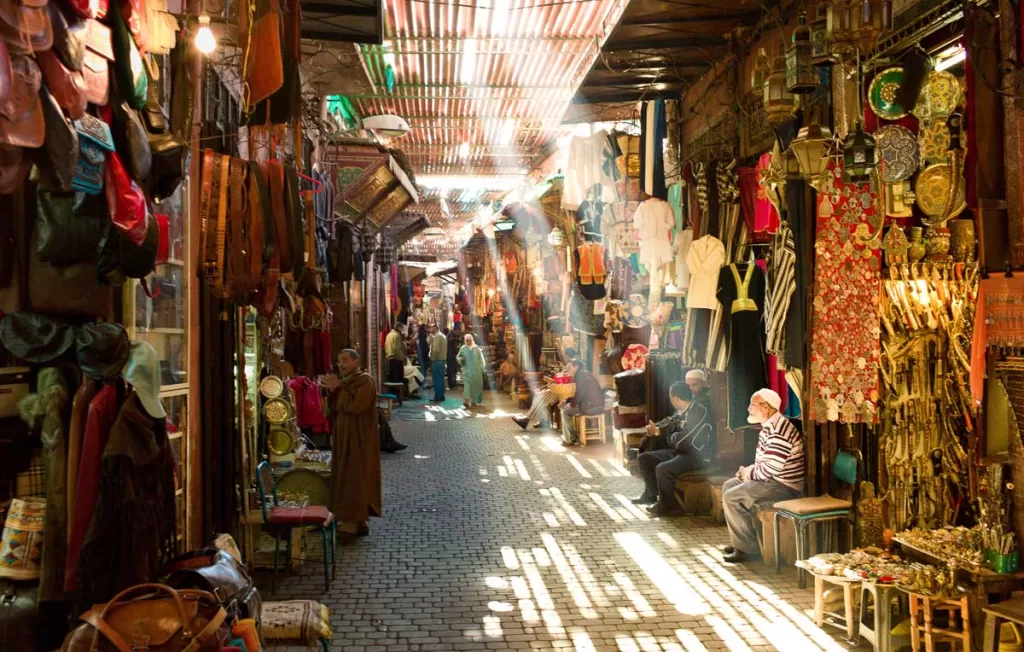Uncategorized
Handicrafts in Marrakesh moroccan
Marrakesh, a vibrant and colorful city located in Morocco, has a long-standing tradition of producing exquisite handicrafts. From leather goods and ceramics to jewelry and textiles, Marrakesh is a treasure trove for anyone interested in exploring the beauty and diversity of Moroccan craftsmanship. In this article, we’ll take a closer look at the handicrafts of Marrakesh, their history, and their significance in Moroccan culture.
History of Handicrafts in Marrakesh
The tradition of handicrafts in Marrakesh dates back centuries. The city has been a center of commerce and trade since the Middle Ages, and artisans have been creating beautiful objects for both local use and export for just as long. Under the Almoravid dynasty in the 11th century, Marrakesh became known for its metalworking and jewelry, and later under the Saadian dynasty in the 16th century, the city became renowned for its textile production, especially wool and silk.
During the French colonial period in the 20th century, the Moroccan government made a concerted effort to promote traditional crafts as a way of stimulating the economy and preserving cultural heritage. This led to the establishment of artisanal cooperatives in Marrakesh and throughout the country, which helped to provide training and resources to local artisans, as well as market their products to an international audience.
Types of Handicrafts in Marrakesh
Marrakesh is a city that is filled with handicrafts, each with its own unique history and style. Here are some of the most popular types of handicrafts that can be found in Marrakesh:
- Leather goods: Marrakesh is famous for its leather goods, which are made using traditional tanning methods that have been passed down for generations. Leather products such as bags, shoes, and belts are made using high-quality leather that is tanned with natural ingredients such as henna and poppy.
- Ceramics: Ceramic production is another craft that has a long history in Marrakesh. The city is home to many pottery workshops, where skilled artisans use traditional techniques to create beautiful, hand-painted ceramics. These pieces are often decorated with intricate patterns and vibrant colors.
- Textiles: Marrakesh is also known for its textiles, which are made using a variety of techniques such as weaving, embroidery, and printing. The city is famous for its woolen blankets and carpets, as well as its colorful kaftans and djellabas, traditional garments worn by both men and women.
- Jewelry: Jewelry making is another craft that has been practiced in Marrakesh for centuries. Moroccan jewelry is characterized by its use of silver, coral, and other semi-precious stones, and often features intricate filigree work and detailed engraving.
Significance of Handicrafts in Moroccan Culture
Handicrafts play an important role in Moroccan culture, as they are a source of pride and identity for the country. The creation of handmade objects is seen as an art form, and skilled artisans are highly respected and celebrated for their work. Many of the techniques and designs used in Moroccan handicrafts have been passed down through generations, and are an important part of the country’s cultural heritage.
Handicrafts are also an important part of the economy in Morocco. The government has made a concerted effort to promote traditional crafts as a way of creating jobs and stimulating the local economy. Artisanal cooperatives have been established throughout the country, which provide training and resources to local artisans, as well as market their products to an international audience.
Visiting Handicrafts Markets in Marrakesh
One of the best ways to experience the beauty and diversity of Moroccan handicrafts is to visit one of the many markets in Marr

